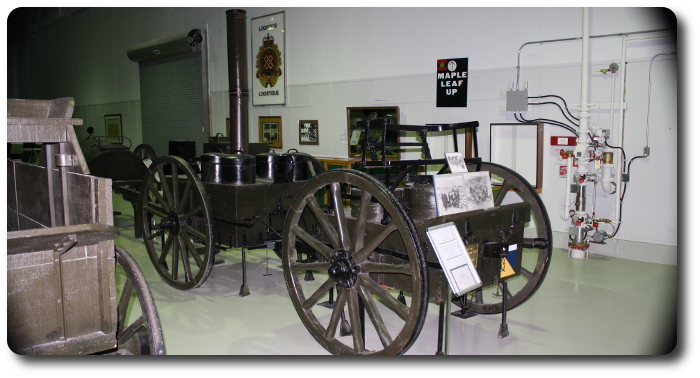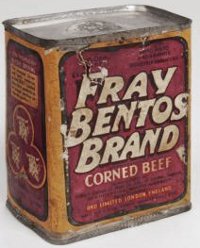Topic: Army Rations

Pound of Meat a Day to Each Man at Front
British Army, Rules Also Require Like Amount in Each Soldier's Kit
Spokane Daily Chronicle, Spokane, Washington, 23 November 1917
Behind British Lines in France, Nov. 22.—The British army ration scale allows one pound of meat to each man daily to the troops in the trenches, and three-quarters of a pound to those at home. It further requires each soldier at the front to carry a pound of meat in his kit.
The measures by which an army equal to one-fifth of the male population of Great Britain before the war have been supplied with meat on this scale amount to something like a revolution in the technique of army supply.
At the very beginning of the present war it was decided to provide frozen meat for the army and the boards of trade at once entered into negotiations with firms importing meat from the Argentine for a monthly supply of 15,000 tons. Later a "meat committee" was set up, and entrusted with the work of importing meat, not only for the British army, but also for the French and Italian governments, and for the British civil population.
The principal source of supply at present is the Argentine, with assistance from Australia and New Zealand. Both Australia and New Zealand have reserved their entire surplus supply of meat for the use of the imperial government, and over $200,000,000 worth of beef, mutton and lamb has been brought from those countries.
To carry these enormous quantities of meat to the troops the board of trade requisitioned all the shipping engaged in the frozen meat traffic. Some of the meat is taken to England, but the greater part of that required for the armies is landed directly at the base ports, where it is discharged into cold storage warehouses specifically erected for the purpose. In this manner there is delivered monthly 30,000 tons of meat for the British armies and 25,000 tons to the armies of Great Britain's allies.
The cost of this meat up to the beginning of 1916 figured out at an average of about 12 ½ cents a pound, but it has since risen to about 16 ½ cents.
Sixty Per Cent Frozen
 Frozen meat at present constitutes 60 per cent of the total meat issued to the British army. The remainder is made up of preserved meat of several varieties. The most familiar form is the well-known "bully beef," which is corned beef packed in small oblong tins, each containing 12 ounces. Some units cook their bully beef, other prefer it just as it comes from the tin. In comprised the principal article of diet for the army at Gallipoli.
Frozen meat at present constitutes 60 per cent of the total meat issued to the British army. The remainder is made up of preserved meat of several varieties. The most familiar form is the well-known "bully beef," which is corned beef packed in small oblong tins, each containing 12 ounces. Some units cook their bully beef, other prefer it just as it comes from the tin. In comprised the principal article of diet for the army at Gallipoli.
Another form of preserved ration is a combination of about nine ounces of meat and a half pound of potatoes and other vegetables. This is served after warming up, either by heating in the tin or by boiling the contents in a camp kettle, which transfers it into a fairly appetizing stew. This combination, which is known in army parlance as "meat and vegetable ration," is manufactured in England by about 30 firms, working under the inspection of the local government board.
Another form of preserved ration, adopted from the American armies, is pork and beans. The first supplies of these were obtained from the Canadian Pacific Railway company and were introduced on an experimental scale in March, 1916.
The amount of canned meats supplied to the troops in France is enormous. Three and a half million cans are received weekly at the bases, and since the beginning of the war the army contract department has purchased over 400,000,000 cans of preserved meat. These cans would weigh about 178,500 tons, roughly the equivalent is weight of six superdreadnaughts.

